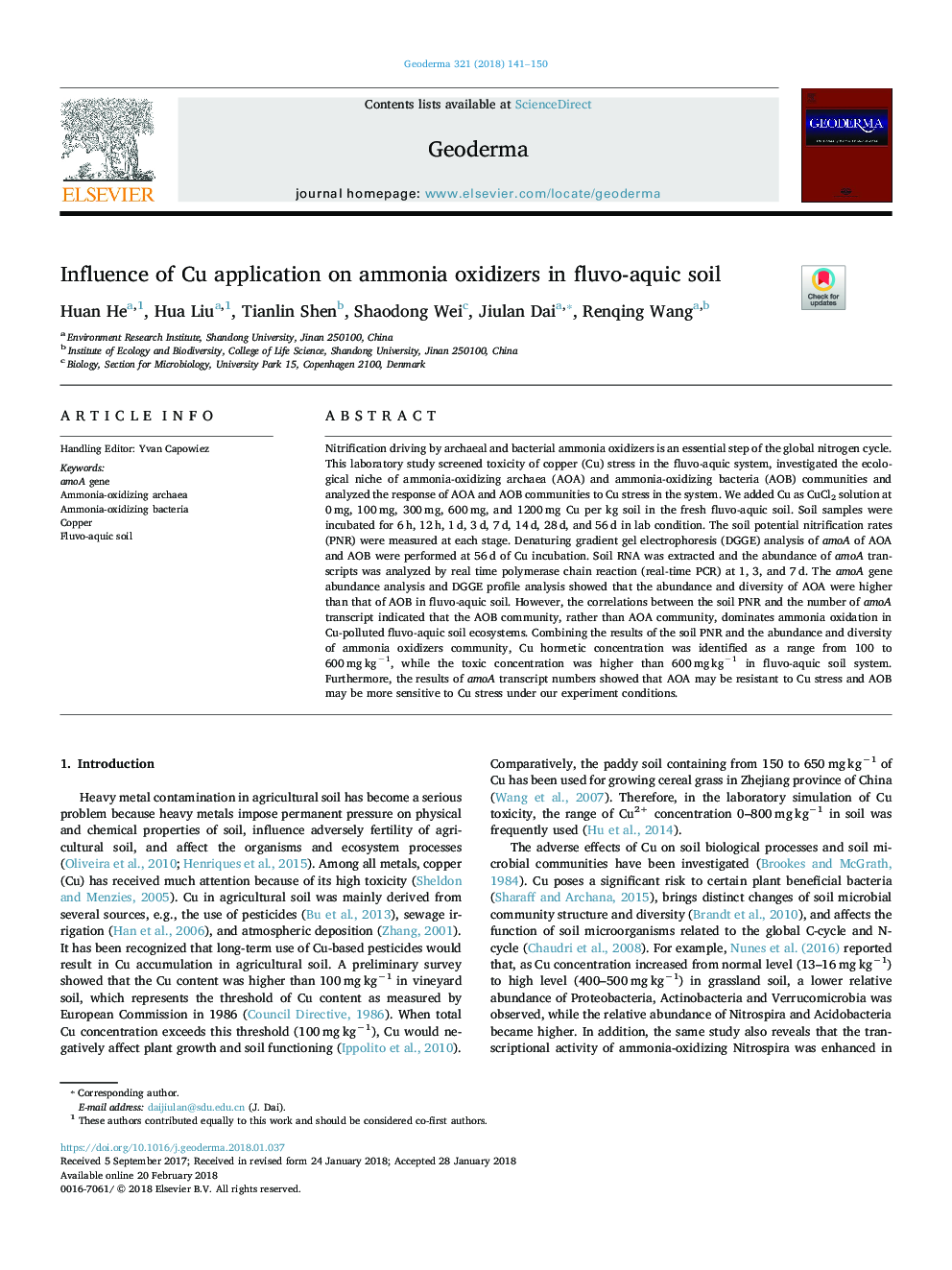| Article ID | Journal | Published Year | Pages | File Type |
|---|---|---|---|---|
| 8894106 | Geoderma | 2018 | 10 Pages |
Abstract
Nitrification driving by archaeal and bacterial ammonia oxidizers is an essential step of the global nitrogen cycle. This laboratory study screened toxicity of copper (Cu) stress in the fluvo-aquic system, investigated the ecological niche of ammonia-oxidizing archaea (AOA) and ammonia-oxidizing bacteria (AOB) communities and analyzed the response of AOA and AOB communities to Cu stress in the system. We added Cu as CuCl2 solution at 0â¯mg, 100â¯mg, 300â¯mg, 600â¯mg, and 1200â¯mg Cu per kg soil in the fresh fluvo-aquic soil. Soil samples were incubated for 6â¯h, 12â¯h, 1â¯d, 3â¯d, 7â¯d, 14â¯d, 28â¯d, and 56â¯d in lab condition. The soil potential nitrification rates (PNR) were measured at each stage. Denaturing gradient gel electrophoresis (DGGE) analysis of amoA of AOA and AOB were performed at 56â¯d of Cu incubation. Soil RNA was extracted and the abundance of amoA transcripts was analyzed by real time polymerase chain reaction (real-time PCR) at 1, 3, and 7â¯d. The amoA gene abundance analysis and DGGE profile analysis showed that the abundance and diversity of AOA were higher than that of AOB in fluvo-aquic soil. However, the correlations between the soil PNR and the number of amoA transcript indicated that the AOB community, rather than AOA community, dominates ammonia oxidation in Cu-polluted fluvo-aquic soil ecosystems. Combining the results of the soil PNR and the abundance and diversity of ammonia oxidizers community, Cu hormetic concentration was identified as a range from 100 to 600â¯mgâ¯kgâ1, while the toxic concentration was higher than 600â¯mgâ¯kgâ1 in fluvo-aquic soil system. Furthermore, the results of amoA transcript numbers showed that AOA may be resistant to Cu stress and AOB may be more sensitive to Cu stress under our experiment conditions.
Related Topics
Physical Sciences and Engineering
Earth and Planetary Sciences
Earth-Surface Processes
Authors
Huan He, Hua Liu, Tianlin Shen, Shaodong Wei, Jiulan Dai, Renqing Wang,
